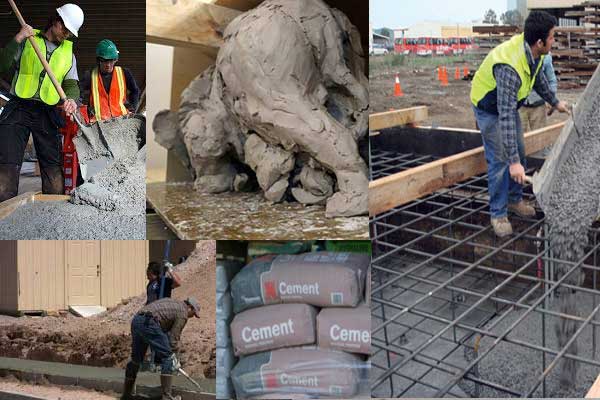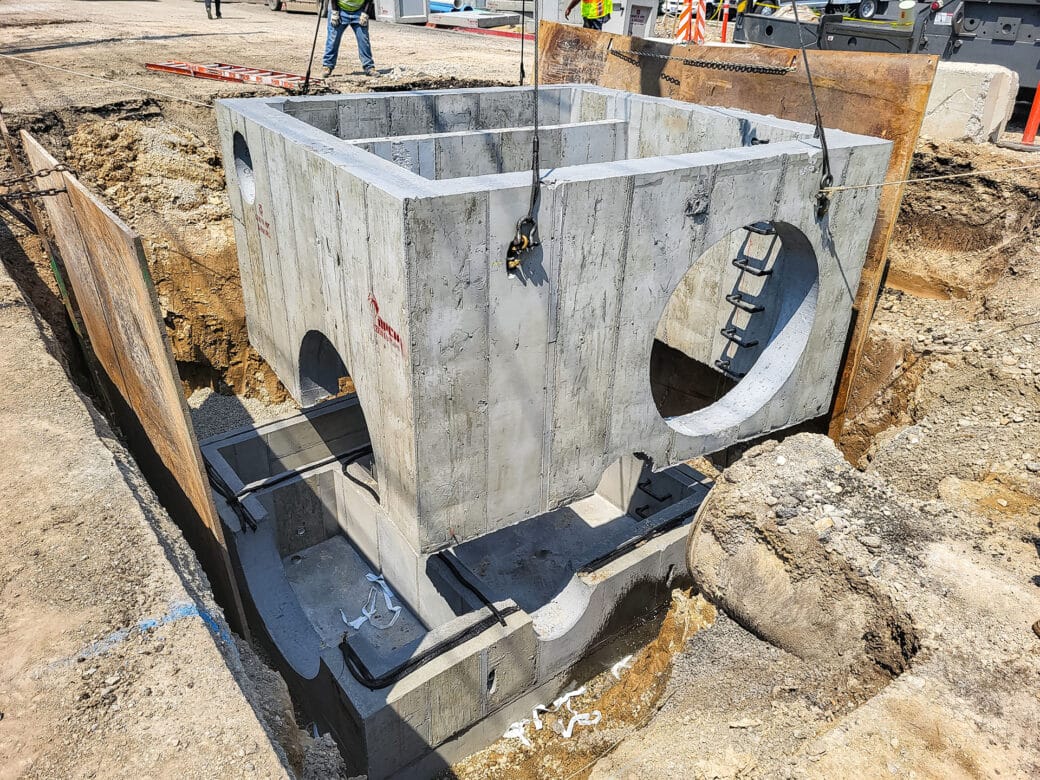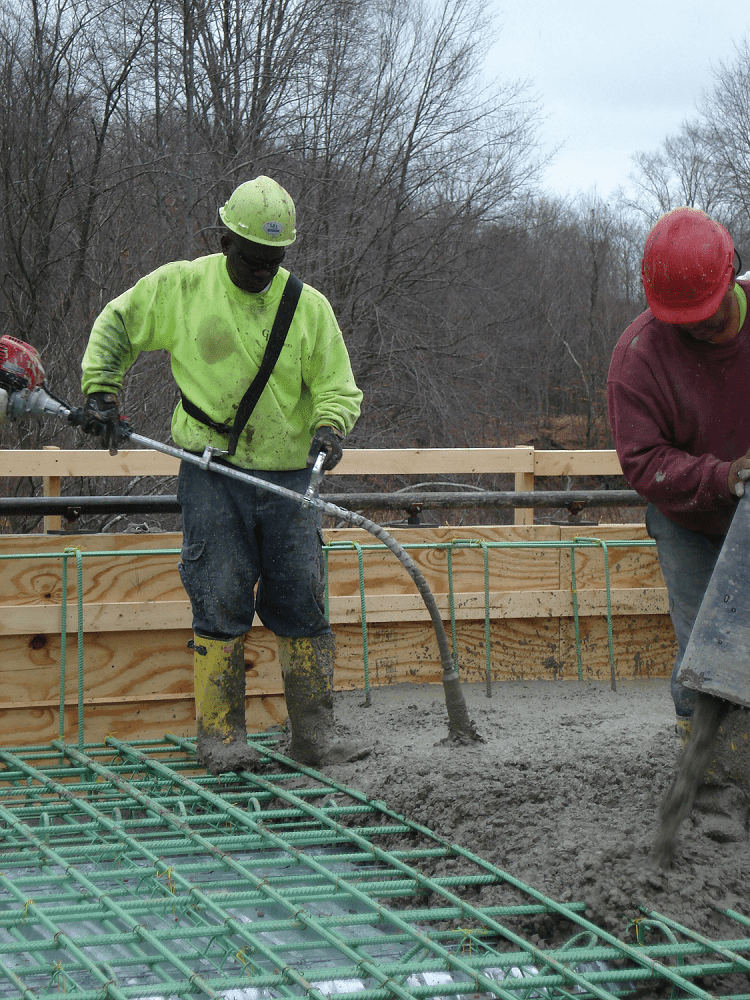Understanding the Different Applications of General Engineering Concrete in Diverse Industries
When you consider the many means general engineering concrete influences different markets, you'll find its applications are both broad and crucial. From providing durable foundations for transport networks to sustaining ingenious energy options, this material plays a crucial function in forming our facilities. But what regarding its impact on city growth and ecological design? Exploring these facets can reveal far more than you may expect.
The Role of Concrete in Building and Building Projects
Concrete plays a crucial function in building and construction and structure tasks, comprising around 70% of all materials made use of in modern-day frameworks. You'll find it in structures, wall surfaces, and floors, offering strength and toughness. When you choose concrete, you're going with a product that can endure weather, stand up to fire, and support heavy tons. Its convenience enables different applications, from residential homes to imposing skyscrapers.Mixing concrete with additives can enhance its properties, boosting workability and establishing times. You can also mold and mildew it right into different forms, permitting creative thinking in design. As you work with your jobs, take into consideration the environmental advantages of utilizing concrete, such as its capacity to minimize power usage in structures. In general, concrete's integrity and flexibility make it a foundation of the building market, guaranteeing that frameworks are not just useful yet also secure and durable.
Facilities Development: Roadways, Bridges, and Tunnels
When it pertains to infrastructure advancement, roadways, bridges, and passages are essential components that attach communities and promote transportation. You depend on these structures daily, whether you're travelling to function or traveling cross countries. General engineering concrete plays a vital duty in their building and toughness. Its toughness and flexibility permit designers to make robust streets that withstand rush hour and rough weather conditions.Bridges, frequently spanning rivers and valleys, call for specially created concrete to guarantee security and long life. The use of strengthened concrete in passage building not only sustains substantial weight however also improves resistance versus water seepage and ground activity.

Concrete in Transportation: Enhancing Movement and Safety
As you navigate via dynamic cities and country roads, the role of concrete in transport ends up being noticeable, significantly improving both flexibility and safety. Concrete's sturdiness warranties that roads, runways, and bridges endure heavy website traffic and harsh weather conditions. This durability decreases the need for frequent repair services, keeping your journeys smooth and reliable.In addition, the layout flexibility of concrete enables cutting-edge structures like overpasses and passages, which effectively minimize blockage and improve website traffic flow. You'll notice that concrete surfaces additionally offer better traction, decreasing the possibility of accidents in wet conditions.Moreover, using concrete in trains helps keep security and safety and security for trains, making your journeys a lot more reliable. In general, concrete's payments to transport not only enhance your wheelchair however likewise significantly bolster public safety, showing its essential duty in the infrastructure you rely on day-to-day.

Power Industry Applications: From Power Plants to Renewable Resource
In the power sector, concrete plays a substantial role in the building and construction and operation of nuclear power plant and renewable power setups. You'll discover it important for developing tough foundations, supports, and control structures that hold up against severe conditions. In thermal power plants, enhanced concrete structures ensure safety and security and durability against heats and pressure. West Coast General Engineering concrete foundation.When it involves eco-friendly power, concrete is necessary for wind generator bases, solar panel installs, and hydroelectric dams. It gives the security required to harness energy successfully. You might not understand it, yet the concrete used in these applications is particularly developed to satisfy specific performance standards, like sturdiness and resistance to environmental factors
Innovative Concrete Solutions in Environmental Engineering

The Impact of Concrete on Urban Development and Landscaping
Concrete plays an essential function fit city development and landscape design, affecting everything from framework longevity to aesthetic allure. When you think about cityscapes, concrete frameworks like bridges, roadways, and structures come to mind, providing a sturdy foundation for city life. You'll discover exactly how properly designed concrete paths and plazas enhance public spaces, making them more welcoming and functional.In landscape design, concrete offers adaptability, making it possible for innovative styles for patios, maintaining walls, and attractive features. You can create distinct outdoor areas that mix flawlessly with nature while maintaining architectural stability. In addition, concrete's capacity to hold up against climate extremes guarantees durability, decreasing the demand for frequent repair work.
Future Fads and Improvements in General Engineering Concrete
As urban landscapes develop, the need for cutting-edge concrete remedies is driving innovations in basic engineering. You'll observe fads leaning towards environmentally friendly products and lasting practices. Researchers are concentrating on establishing high-performance concrete that minimizes environmental influence without compromising strength.Next-gen ingredients and blends, like recycled aggregates and bio-based materials, are obtaining grip, enhancing durability and decreasing carbon footprints. Smart concrete modern technology is likewise emerging, incorporating sensors that keep an eye on architectural health in real-time, allowing for aggressive maintenance.You could discover that 3D printing with concrete is becoming extra feasible, allowing complex layouts and faster construction timelines. Furthermore, the combination of self-healing concrete is on the rise, making sure durability and lowering fixing prices.
Regularly Asked Concerns
What Are the Ecological Impacts of Concrete Production?
Concrete manufacturing generates significant carbon emissions, takes in water, and depletes natural resources. You can minimize these influences by checking out lasting alternatives, enhancing mix styles, and including recycled products to decrease your environmental footprint and boost sustainability.
Exactly How Does Concrete Compare to Various Other Structure Materials?
Concrete's longevity and toughness often outperform products like wood and steel. It's versatile, affordable, and energy-efficient, but its ecological impact can be considerable. You'll intend to consider these aspects when choosing structure products.
What Are the Various Types of Concrete Available?
There're several types of concrete available, including requirement, strengthened, high-strength, light-weight, and decorative. Each type offers details objectives, so you can pick the one that ideal fits your project's demands and needs.
Exactly How Is Concrete Recycled and Reused in Building?
You can recycle concrete by crushing it right into aggregate, which you after that reuse in brand-new building and construction projects (West Coast General Engineering industrial concrete Rancho Cucamonga). This procedure minimizes waste, decreases costs, and lessens the environmental impact of sourcing new materials for your builds
What Safety And Security Steps Are Needed When Collaborating With Concrete?
When dealing with concrete, you must wear protective equipment, like gloves and goggles, warranty proper air flow, and utilize risk-free training methods. Constantly follow safety and security standards to avoid injuries and maintain a secure functioning setting.